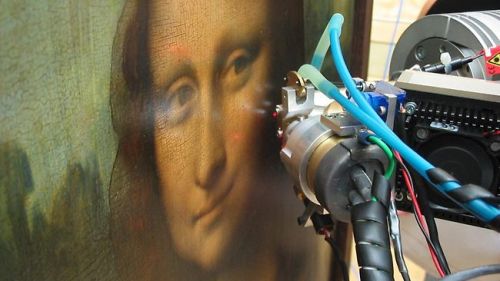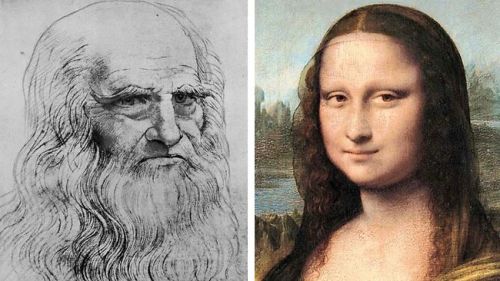ROME (AP) -- A male apprentice, longtime companion and possible
lover of Leonardo da Vinci was the main influence and a model for
the ``Mona Lisa'' painting, an Italian researcher said.
But the researcher, Silvano Vinceti, said Wednesday the portrait
also represents a synthesis of Leonardo's scientific, artistic and
philosophical beliefs. Because the artist worked on it at various
intervals for many years, he was subjected to different influences
and sources of inspiration, and the canvas is full of hidden
symbolic meanings.
"The 'Mona Lisa' must be read at various levels, not just as a
portrait,'' Vinceti said.
This is one of many theories that have circulated over the
decades about the identity of ``Mona Lisa'' and the meaning for her
famously enigmatic smile. Others have said the painting was a
self-portrait in disguise, or the depiction of a Florentine
merchant's wife _ the latter drawing a consensus among scholars.
The world-famous portrait is on display at the Louvre Museum in
Paris.
The apprentice Gian Giacomo Caprotti, known as Salai, worked with
Leonardo for more than two decades starting in 1490. Vinceti
described their relationship as ``ambiguous,'' and most art
historians agree Salai was a Leonardo lover.
Several Leonardo works, including ``St. John the Baptist'' and a
lesser-known drawing called ``Angel Incarnate,'' were based on
Salai, Vinceti told a news conference at the Foreign Press
Association. These paintings show a slender, effeminate young man
with long auburn curls.
Vinceti said similarities with the ``Mona Lisa's'' nose and mouth
are striking.
``Salai was a favorite model for Leonardo,'' he said. ``Leonardo
certainly inserted characteristics of Salai in the last version of
the Mona Lisa.''

It was not the first time that Salai's name had been associated
with the ``Mona Lisa,'' though some scholars expressed skepticism.
Pietro Marani, art historian and Leonardo expert, called the theory
``groundless.''
Vinceti said other influences may have affected Leonardo. He does
not rule out that Lisa Gherardini, wife of Florentine merchant
Francesco del Giocondo, may have provided an early inspiration.
Equally, Vinceti said further inspiration may have come from
noblewoman Beatrice D'Este, who was married to Ludovico Sforza, the
duke of Milan at whose court Leonardo worked in the late 15th
century. Vinceti said that Leonardo often would see the woman while
he was painting ``The Last Supper'' for the Monastery of Santa Maria
delle Grazie in Milan, where she went to pray.

Traditionally, art historians say Leonardo started panting the
``Mona Lisa'' in 1503, when he was back from that Milan stay. But
Vinceti has said he may have started in the late 1490s in Milan.
Vinceti, a media-savvy writer and art investigator, made his name
when he said he had located Caravaggio's long-lost bones last year.
He combines state-of-the-art, CSI-like techniques with old-fashioned
library research.
Analyzing high-definition scanned images of the ``Mona Lisa,''
Vinceti claimed in recent weeks to have found the letters ``S'' and
``L'' in the model's eyes, and the number ``72'' under the arched
bridge in the backdrop of the painting.
He attaches several symbolic meanings to these letters: the ``S''
pointed him to Salai and the Sforza dynasty that ruled Milan, while
the ``L'' is a reference to the artist himself and Lisa Gherardini.
Marani, the Leonardo expert, said at least three historical
documents prove that Gherardini was the original model. He said
there are no known paintings of Salai, though he conceded it was
entirely possible that the young apprentice might serve as a model
for other Leonardo works such as ``St. John the Baptist.''
But he warned against reading too much into possible similarities
between subjects.
``All Leonardo subjects look like each other because he
represents an abstract ideal of beauty. Therefore they all have this
dual characteristic of masculine and feminine,'' said Marani, an art
professor at Milan's Politecnico university.
``The work began as the portrait of Lisa Gherardini, but over the
years in Leonardo's hands it slowly turned into something else: an
idealized portrait, not a specific one,'' Marani said. ``That's also
why you have this fascinating face that transcends time and
transcends a specific person, and why all these theories keep piling
up.''
'모나리자'는 남성모델: 미술 사학자
최근 모나리자의 눈속에서 글자와 숫자를 발견했다고 발표한 이태리국립문화유산위원회 위원장인 실바노 빈세티는 2일(현지시간) "모나리자 모델은 다빈치의 남성 제자"라고 주장했다.
이태리 미술사학자이기도 한 빈세티가 주장한 남성 제자는 '살라이'로 알려진 지안 지아코모 카프로티다. 살라이는 1490년부터 약 20여년간 다빈치의 제자로 일을 했다. 빈센티는 다빈치와 살라이 관계를 애매모호하다고 했으나 일부에서는 다빈치의 동성애인으로 알려져있다.
빈세티는 특히 모나리자의 코와 입이 살라이와 많이 닮았다고 강조했다.
살라이가 언급된 것은 이번이 처음은 아니다. 일부 미술학자들은 빈센티의 주장이 근거가 없다고 일축하고 있다.









![[Kim Seong-kon] Democracy and the future of South Korea](http://res.heraldm.com/phpwas/restmb_idxmake.php?idx=644&simg=/content/image/2024/04/16/20240416050802_0.jpg&u=)







![[KH Explains] Hyundai's full hybrid edge to pay off amid slow transition to pure EVs](http://res.heraldm.com/phpwas/restmb_idxmake.php?idx=652&simg=/content/image/2024/04/18/20240418050645_0.jpg&u=20240418181020)

![[Today’s K-pop] Zico drops snippet of collaboration with Jennie](http://res.heraldm.com/phpwas/restmb_idxmake.php?idx=642&simg=/content/image/2024/04/18/20240418050702_0.jpg&u=)